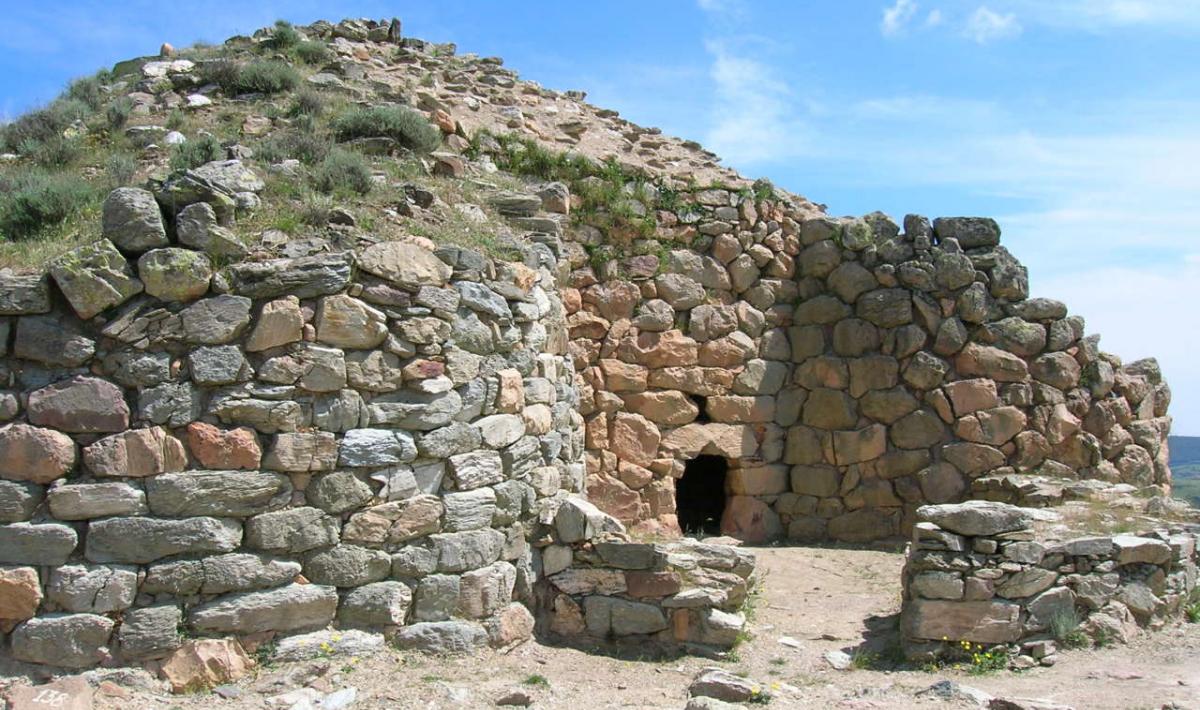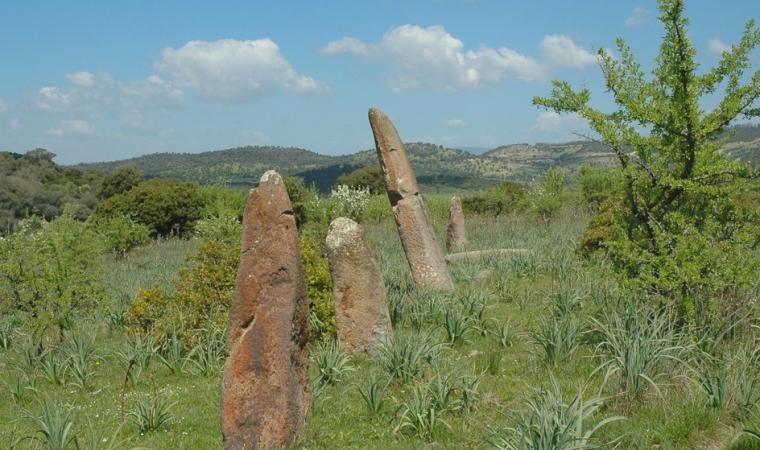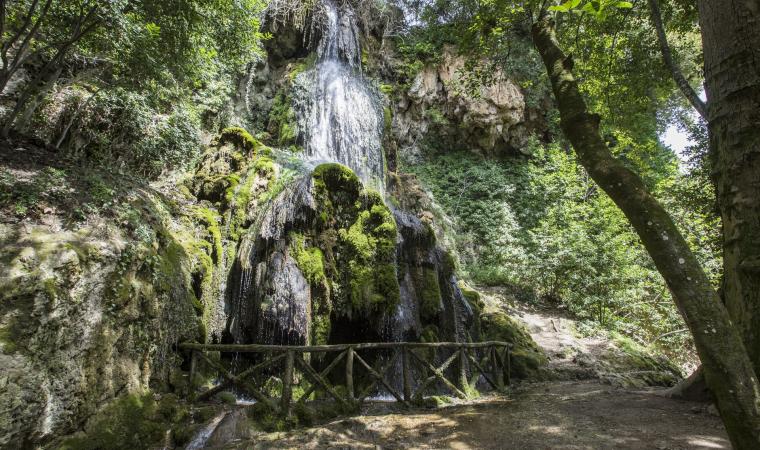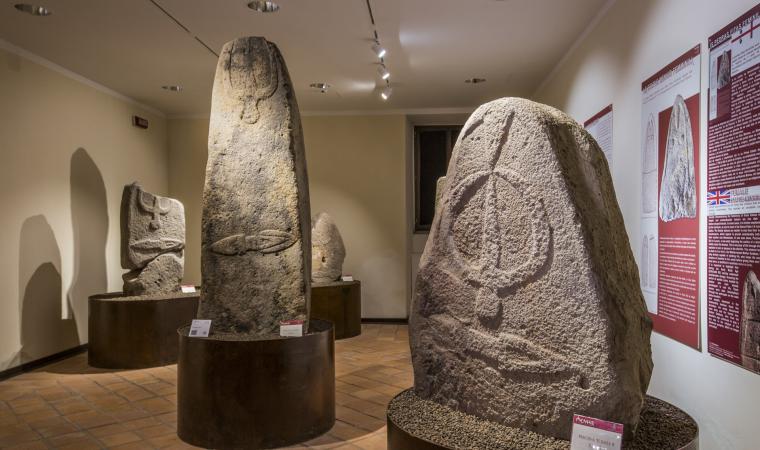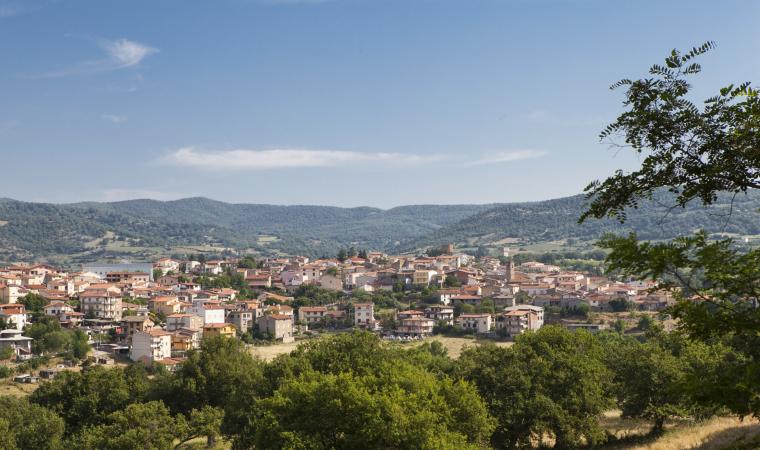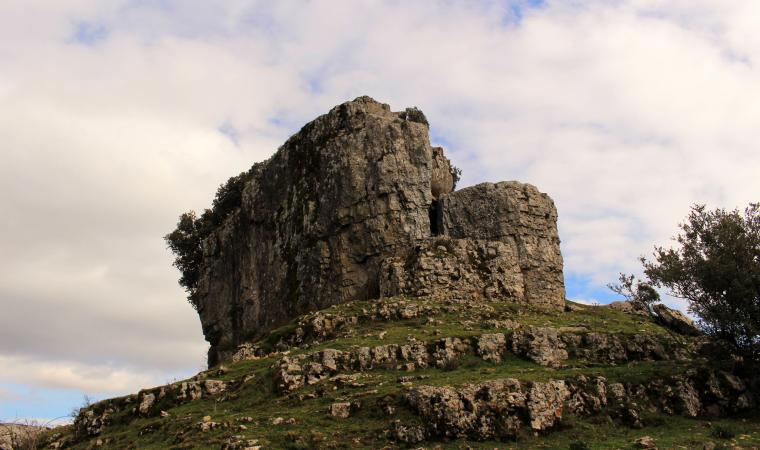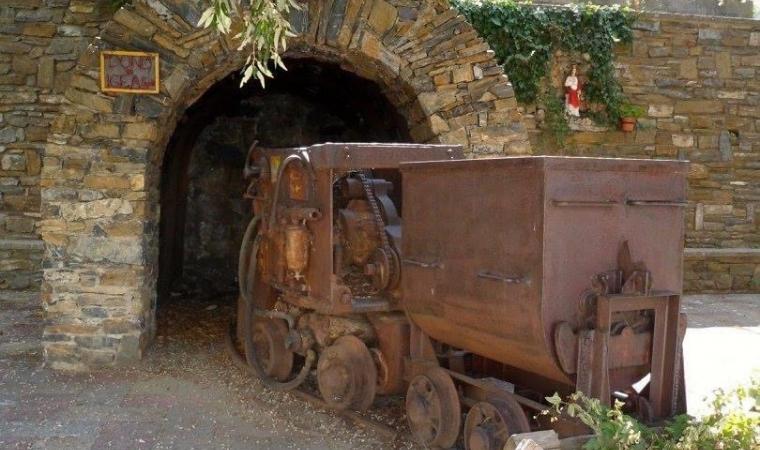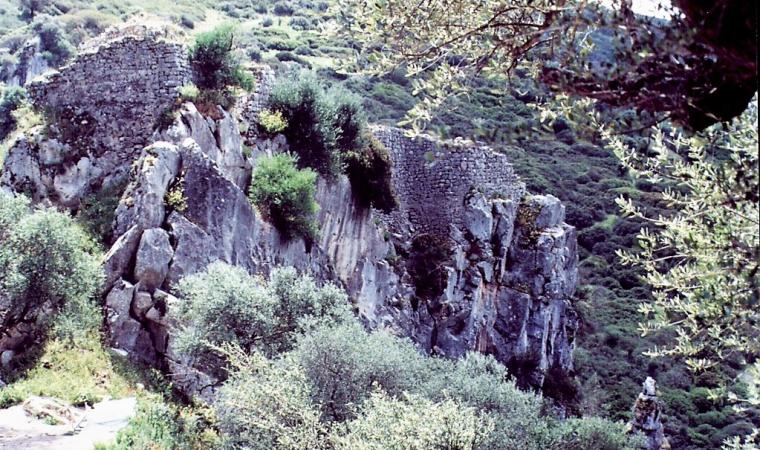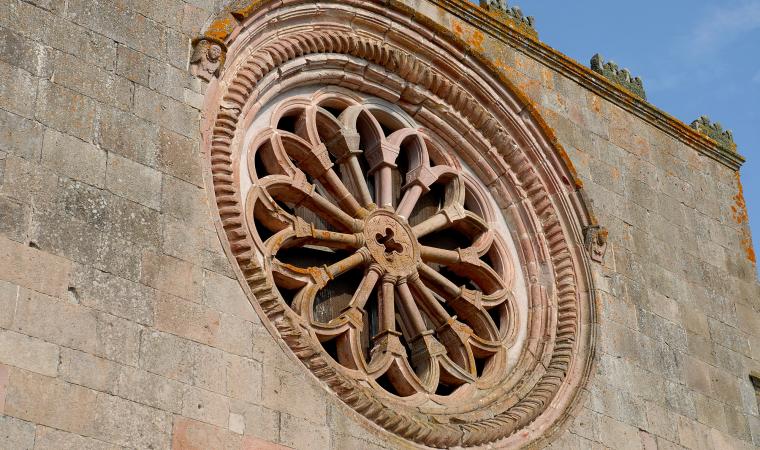Its mighty structure, built in various phases and consisting of central main tower and a bastion with four smaller corner towers around it, brings to mind one of the most famous Bronze Age monuments, su Nuraxi in Barumini. The nuraghe Nolza is the most important archaeological site in Meana Sardo, a typical village with agro-pastoral traditions, which is seven kilometres away (to the south), as well as the largest in the entire Barbagia di Belvì region. The quatrefoiled building stands on the Cuccurru Nolza, the highest elevation (740 metres) of the schist plateau of su Pranu, on the southwestern edge of the park of Gennargentu. From Meana, the road takes you alongside it, but you can also reach the nuraghe on the Trenino Verde tourist railway line, on the stretch from Mandas to Sorgono: the train stops just 300 metres from the monument.
The majestic central tower, about thirteen metres high (today), dominates a village of huts extending two and a half hectares around it. Research is still ongoing and has so far ascertained that the village represents the original settlement (16th-15th century BC) of the complex. The phases of construction of the Nuragic fortress are demonstrated by the use of different techniques and materials: the keep, two of the four perimeter towers and the eastern and northern curtain walls, dating back to the 14th-13th century BC, were built with schist blocks positioned in irregular rows; the other two towers and the southern and western curtain walls were built around the 12th century BC with porphyry blocks, positioned using the polygonal technique. Close to the walls, more than one hundred perfectly worked blocks of trachyte were found and originally formed the upper part of the monument. The various phases were characterised by renovations and adaptations and, in particular, the keep underwent extensive restoration.
The Nolza, already described in detail in 1842 by the historian Vittorio Angius, was studied for the first time in 1940 and has been investigated since 1988 by the ‘father’ of Sardinian archaeology, Giovanni Lilliu. The excavations, which took place between 1994 and 2000, unearthed the interiors. The room at the top, between the keep and the curtain wall, is particularly interesting and is a sort of ‘courtyard’ devoid of the original tholos (false dome) roof. It is paved with schist paving stones, sheets of cork and beaten clay and has a counter and a hearth made of trachyte stones. The entrance to the first floor of the central tower opened up onto the courtyard. A staircase takes you to the (current) top of the nuraghe where you can observe the splendid landscape that surrounds the archaeological area.
Among the finds, pottery from the Middle Bronze Age and other artefacts of daily use from the Late Bronze Age stand out: bowls, pans, trachyte and granite mills, pestles and sickle elements made of obsidian, as well as animal bones. Another notable protohistorical monument in Meana is the nuraghe Maria Incantada. Other archaeological legacies belong to the Roman era: a spring in the locality of Polcilis and the tombs of s’Enna sa pira and Laldà.

